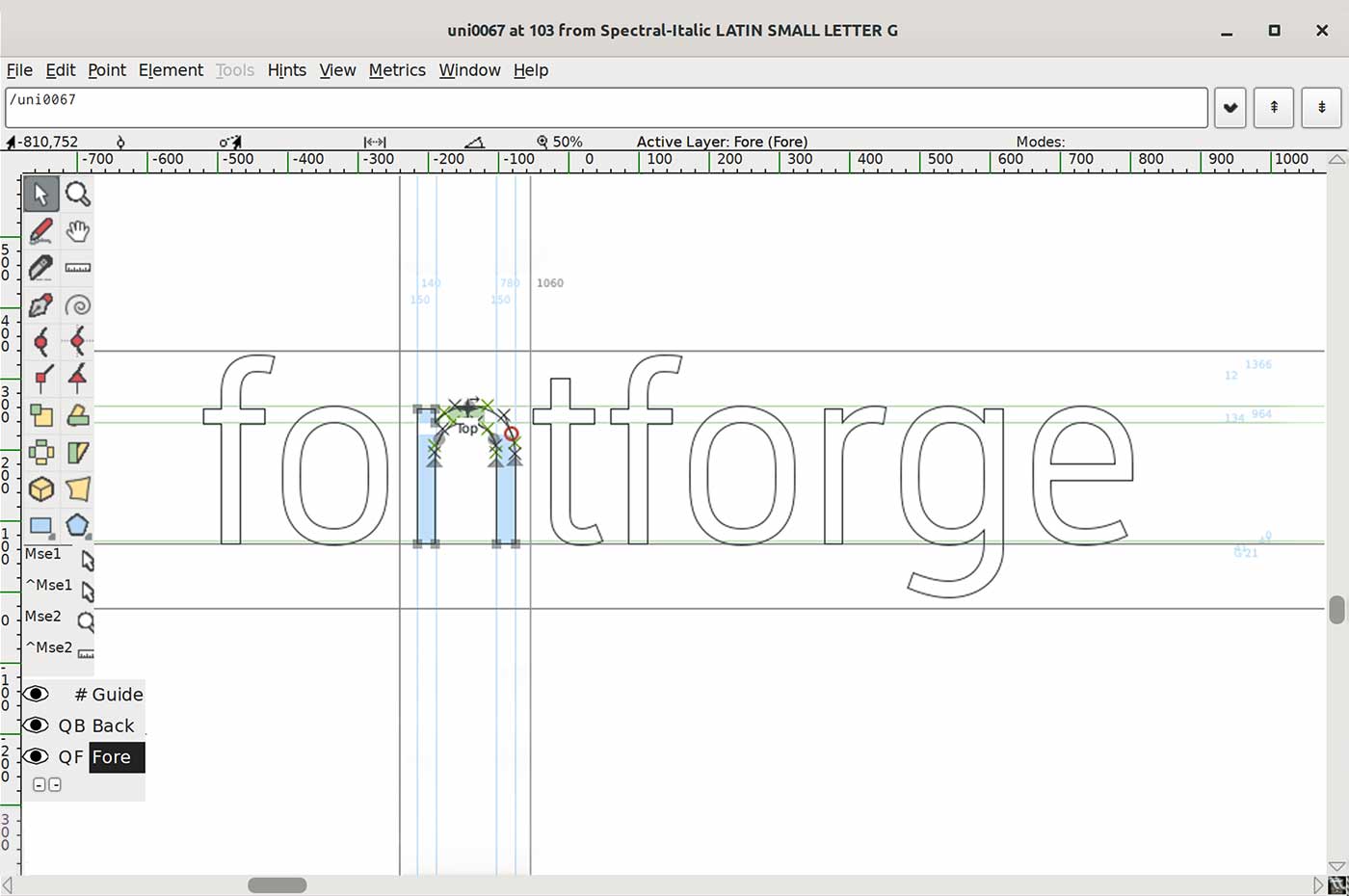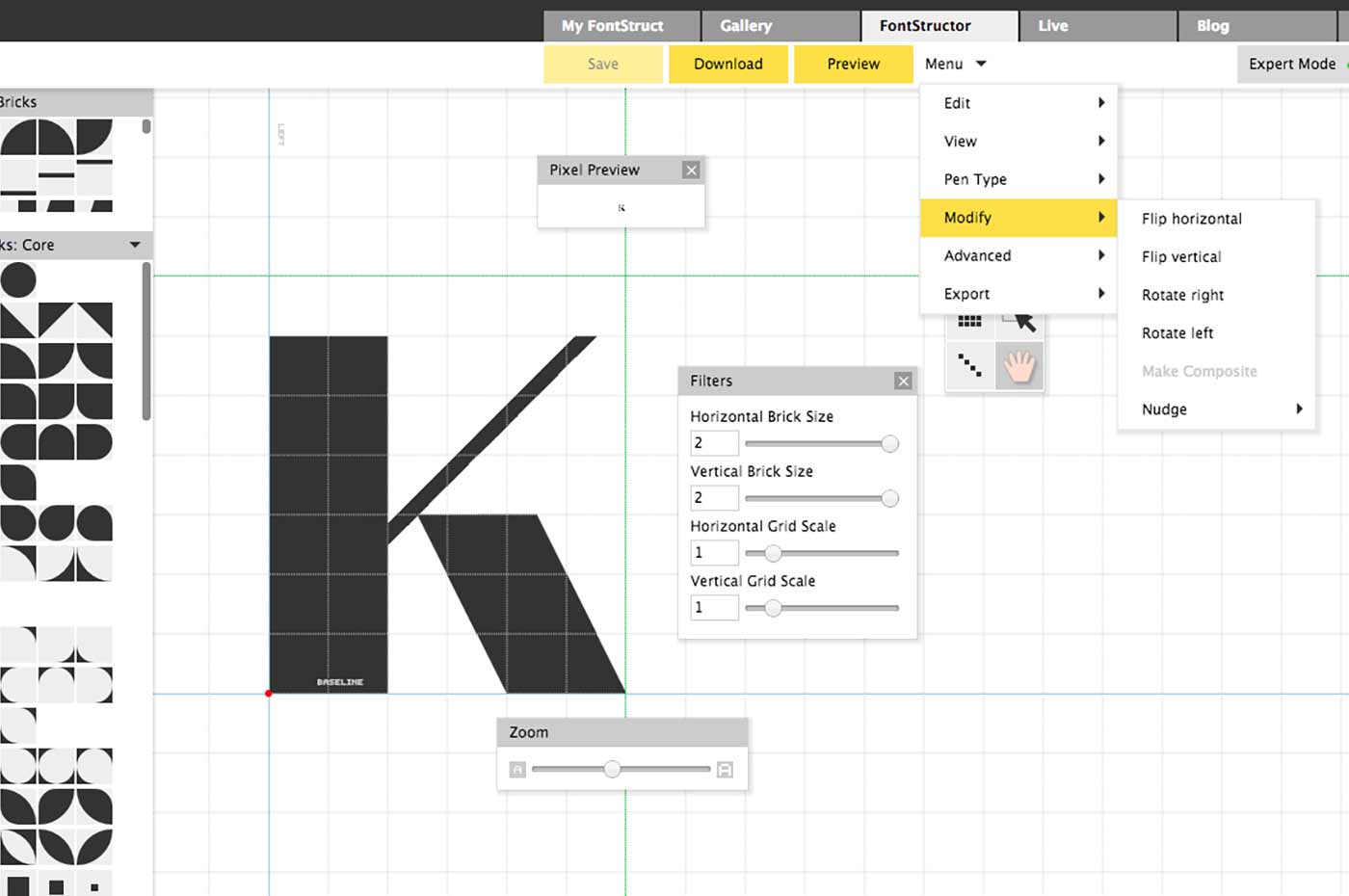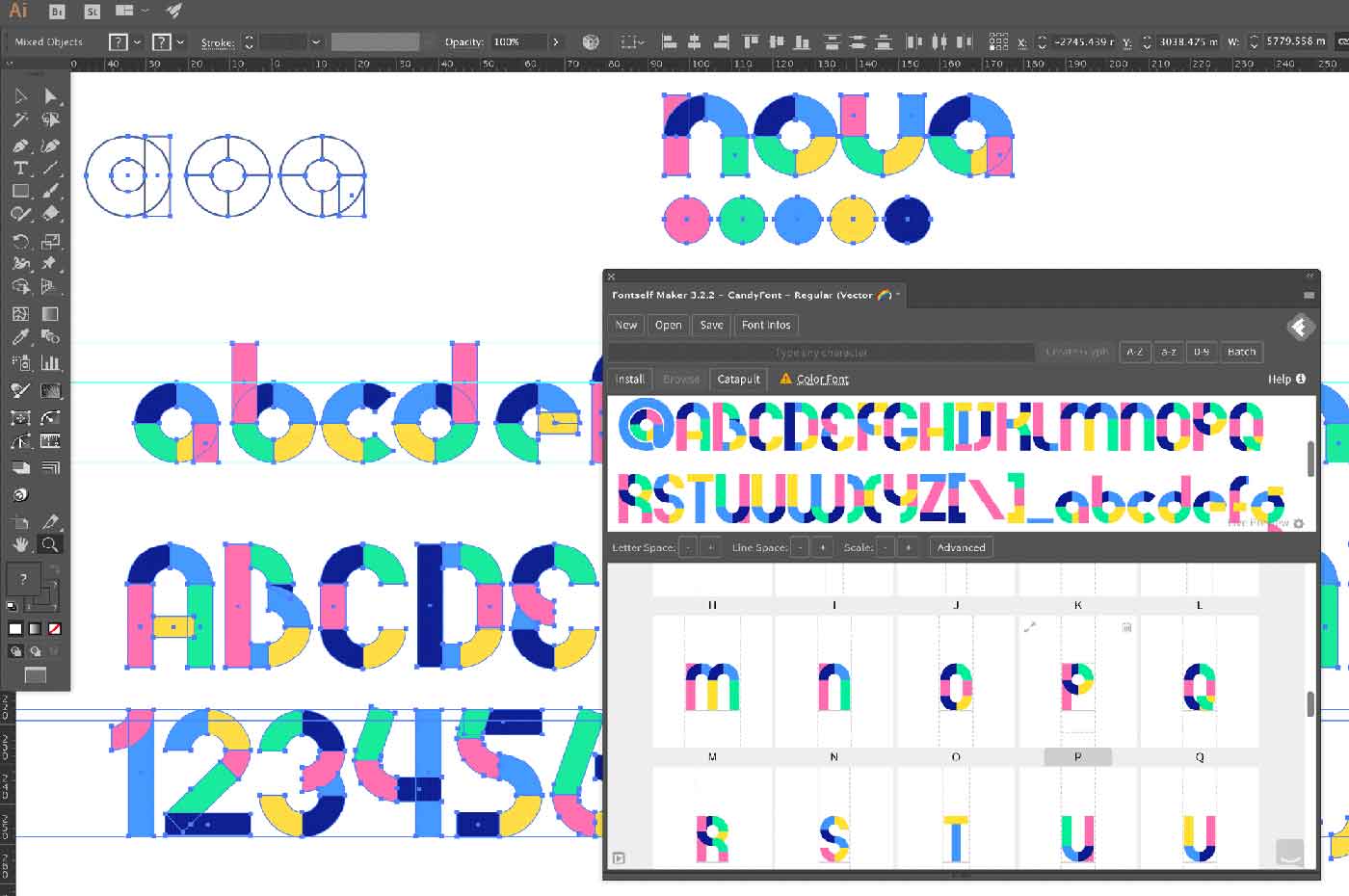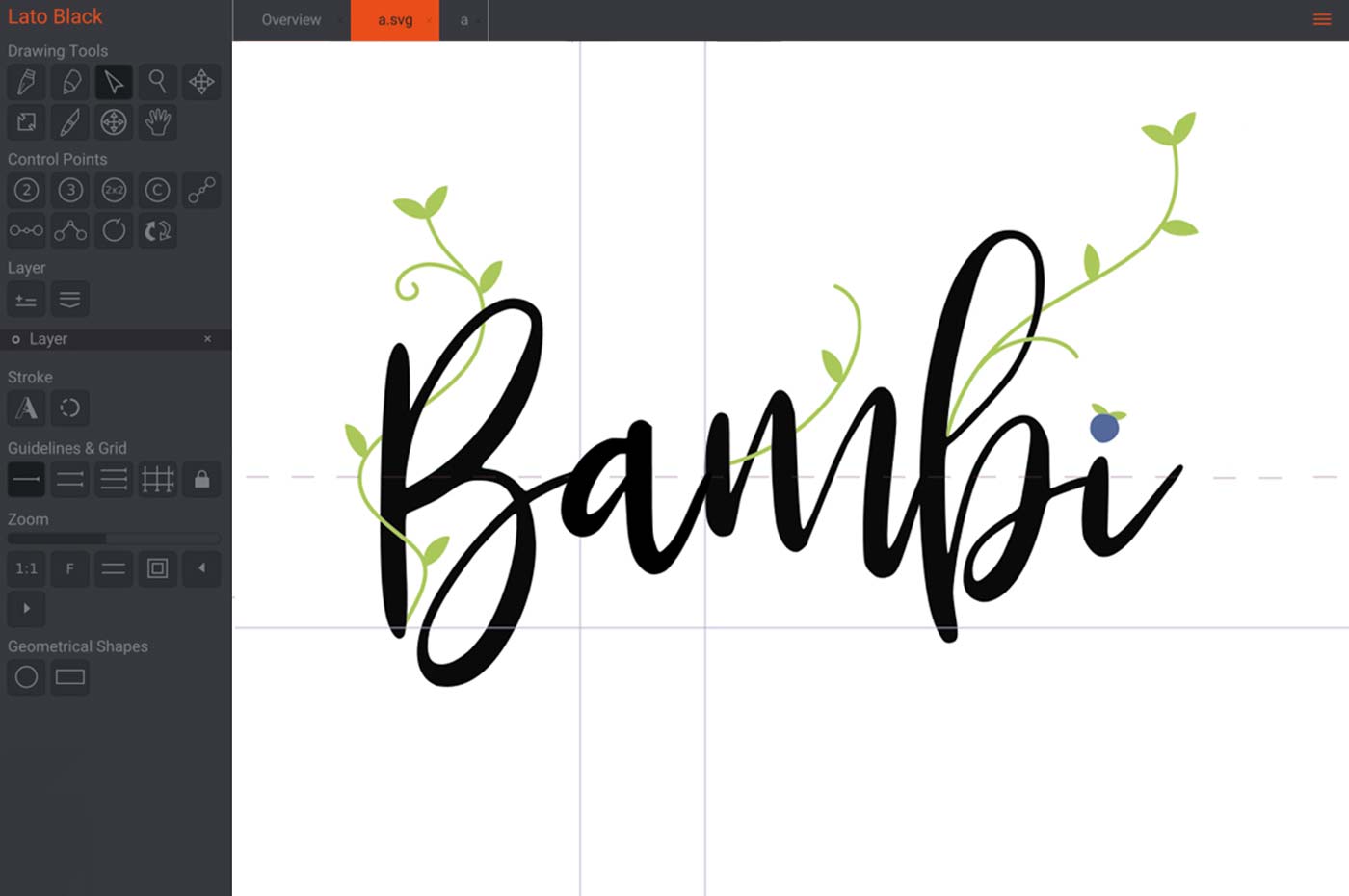The Designest may receive compensation from companies, products, and services featured in this publication. For more details, please refer to our Affiliate Disclosure page.
In recent years, the web design field has been developing even faster than it used to. It is particularly evident during the pandemic when most shopping is done on the internet. Online stores, new brands — they all require thoughtful graphic design. And typography is one of the most important parts of it.
Choosing the right font is a key to your whole work’s success, as fonts influence customers’ subconscious. A well-chosen typeface can even increase a brand’s popularity. The font can attract the right kind of customers since it evokes their emotions and shows your brand values: traditional, formal, or on the contrary, fun and family-oriented. And, despite there are many ready-to-use typefaces that you are familiar with, the time may come when you need something new for the specific project. There is a great solution to the problem — creating your own font.
After you came up with the design of your font, the turn of the technical part comes. It seems frightening for beginners: the fact that mastering all aspects of the creation is a long process and takes years pushes them away. However, right after you learn foundational typographic principles and understand which steps you need to take, you’ll be able to create your own font from scratch. Moreover, the learning process is one of the most exciting creative endeavors in digital design.
In this article, we’ll help you overcome your doubts by giving all the tools to bring your font ideas to reality. Everything helpful on the way of creating is here: online classes, useful tools and some general recommendations.
Helpful Tools
When you find yourself looking at a computer screen absent-mindedly and scrolling through the ready-to-use fonts finding no inspiration in them, it’s time to take actions. Building the typeface that meets all the requirements of your current artwork may be the perfect way to convey all the creative ideas through design. To create your own font, first of all, it is important to choose useful software. Five websites we cover here offer a great number of editing tools so you can minimize time-consuming process of font creation.
FontLab7
FontLab 7 is an integrated editor for font design that helps create typefaces from start to finish, from a simple design to a complex project, and brings a spark of magic into type design. FontLab 7 is available as a 30-day free, fully-functional trial. It is possible to use many open-source font projects as inspiration for your own ones and customize them for your needs.
The app is well-known for its many functions: drawing smooth consistent glyphs, autotracing bitmaps, creating overlaps, simplifying paths, equalizing stems, scaling outlines while keeping stroke thickness. The editor allows users to draw in fractional or integer coordinates, see view numeric and visual measurements, find & fix contour imperfections.
FontForge
FontForge is a free and open-source font design editor and a handy app for font creation. It has a large field of use: create, modify and convert fonts in a variety of formats. Moreover, the control of keyboard shortcuts is included. Typefaces created in FontForge can be saved in SFD, as well as exported to other font formats.
It is easy to change the glyphs via FontForge: the editor offers many tools for drawing, transforming, rounding, adding serifs, as well as copying individual elements or letter parameters (height, width, and so on). It also supports working with layers so creating a font will be easy.
FontStruct
FontStruct is a free, font-building software, allowing quickly and easily create fonts constructed out of geometrical shapes arranged in a grid pattern, like tiles or bricks. Some additional essential tools include the eraser, line/rectangle tool, and hand tool. Each symbol has a corresponding “slot” to help keep track of which characters are already created and which were missed. There is an ability to print and test the result in real-time, which is undoubtedly a convenient feature for both new designers and professionals.
The program has the function of the fast outline drawing. Besides, a big advantage of the font design editor is that it features the ability to upload your own sketches to the network, so your typographic scribbles can find an audience.
Fontself
Fontself is an all-rounded editor that can be used to create a fully functional font with all the bells and whistles that all professional typefaces have (kerning, digraph, etc.). Plus, best of all, it is possible to create a colored font and give the characters any shapes and colors (including gradients and other effects) as well as create standard colorless vector fonts via Fontself that can be applied in any software.
With this font design editor, it is easy to build an instant typeface for use in the Creative Сloud and export OTF fonts for other applications and for sale. It generates designs that can be used as vector artworks in Photoshop, Affinity Photo etc. The editor provides the possibility of making glyphs and modifying many other aspects of the font and setting up font information (copyright, website, and much more).
Birdfont
Birdfont is a free font editor that lets users create vector graphics. It has good support for both monochrome and color font formats and has a user-friendly interface. There are also many different tools to help easily and quickly edit ready-made TTF and SVG fonts and create types, even based on your own handwriting or with pictures in the background.
For image editing (when creating a font from an existing image), this software has tools for scaling, moving, and transforming, it supports the function of unlimited redo/undo and preview. The program helps create custom font from the very beginning with extensive drawing capabilities, so it is possible to design each letter individually. The main features of the application include: drawing symbols with snapping to a grid, drawing glyphs over an image and auto-tracing — converting images into vector symbols.
Step-by-Step Guide to Creating a Font
When the final result you want is in your head, don’t hesitate to move from words to deeds. An ordered tactic will help you avoid getting confused in the process, avoid many mistakes and save your time on the actual design. So, let’s figure out the introductory steps you need to take.
In this section, we will take you on a step-by-step journey through the process of creating your own font. Here we’ll cover both main steps and some tips so design experience wouldn’t leave you discouraged.
Step 1: Outline a Design Brief
- Do you want your font to be used only in a specific project, or will it have a broad application?
- What do you want your font size to be: large or small?
- Do you want your typeface to be serif or sans serif?
- Have you seen any fonts that could inspire you to create your own one?

Step 2: Start Sketching Your Design on Paper
When creating a new font, professional designers make a whole map for it, including alternative styles: italic, bold and small caps. However, you shouldn’t stress over this — it’s not an obligatory step. If you are creating your first font, you need to just focus on the basics.
After you decide on your font’s design, you should take a pencil and paper and draw a simple baseline guide (you don’t have to draw the whole characters set yet, start with so-called “control characters”: letters “H”, “n”, “o” and “y”). It is extremely important to keep your lines perfectly straight and to pay attention to letter spacing and measuring dimensions proportionally (the ruler will help you with that). There are no specific guiedilens for relationships between x-height and cap-height, so it’s all up to you. Try different ratios until you find the perfect one for your own typeface. That’s all about trial-and-error here, so don’t be afraid to make mistakes. Revise, make drastic changes, you can even start it over, though it seems time-consuming — it’s all worth a perfect result!

It helps a lot to make hand-drawn sketch of your font’s individual characters on a blank sheet of paper at first. Here you won’t have any rules and measurements — all you have to do is use your handwriting or doodle some shapes for your letters and find the ones you like the most. After that, following the grid you got, you should draw out all of the 26 glyphs in uppercase and lowercase to complete character set and see how they’ll look. You can use those letters as a template later.
Make sure you didn’t forget to finish up not only letters but also special characters such as numbers and grammar marks (comma, exclamation point and question mark).
Step 3: Choose and Install Your Software
There is a wide choice of applications available that can help create your own font (some of them were listed above). Choosing a convenient app with all the technical features needed to complete your job will significantly facilitate the creation process. While picking, we recommend you read through the app’s features recap so you can get an idea of everything in this software.
Step 4: Start Creating
Now when you’ve finished with hand-drawn sketches and installed the software, you are ready to start working on your font digitally. The process of creating depends on the app you choose, so you can either start from scratch, upload images of your paper sketching or your own handwriting as a template, or upload a font file for editing. After you finish with the letters of your font, you can start downloading numbers, punctuation marks, and other characters you need.

Each element of software has its own learning curve. And the process of working with it may be quite lengthy at first, but once you start getting used to it, you will work faster. Here is the list of terminology that you will need to learn and become familiar with to get yourself up to speed in font making:
- Ascender line is an invisible line at which ascenders begin.
- Ascender height is the height of the upward vertical stroke on letters (such as “h” and “k”).
- Baseline is the invisible line on which all of the font characters are placed.
- Bézier curve is a parametric formula used to model smooth, scalable curves.
- Bowl is the closed rounded part of letters (such as “b”, “d” and “o”).
- Descender depth is the depth of the downward vertical stroke on letters (such as “p” and “y”).
- Glyph is each individual character within a font.
- Stem is the main vertical stroke of a letter (such as “F” and “T”).

Step 5: Refine Your Whole Character Set
It is highly important during the font creation process to be focused on each individual character. However, it is also important to see how your whole set of characters will look as a font while refining it. Here are a few tips for you to follow to create a full-fledged font:
- Don’t forget to pay close attention to the spacing and kerning of the letters. Track this by combining different letters while creating them.
- Try out different sizes for every character of your font. It is an especially important step if your font has to be broad.
- It is easier to spot all the subtle mistakes while seeing your font on paper, so it is highly recommended not only to look at the characters on computer but to print out them from time to time while working on them.

After going through all the steps above, you’re done with the design process. By this time, you not only create the design of your font but also choose and get grips to the software, translate your characters to digital format and refine it to the perfect result you want to get.
Online Typography Classes
The graphic design field doesn’t stay still. The same goes for typography. It has many interesting directions you can add to your repertoire: unusual geometric shapes can inspire you to create your own font design, or the basics of lettering may push you to find something that suits your values, principles and goals.
In these online classes experts, professionals, and renowned designers will teach you building typefaces, hand-lettering, brush lettering and much more. After diving into a range of techniques and topics these classes cover, you’ll better understand the font creating process. Whether you are only a beginner in typography or a professional graphic designer in search of new techniques, you’ll find something helpful in these courses: you need just a computer and your will to learn.
This course offers you a simple yet effective research method to take on font design projects. Here, you’ll learn how to design fonts that influence customers’ perceptions and communicate their vision while being viable in both the marketplace and clients. Also, it walks you through exploring the different elements involved in the creation of a typeface, from anatomy to weight and create a brief using the new knowledge.
Thomas Jockin, typeface designer and your teacher, shows how to test your font in the marketplace and gather feedback using platforms like Instagram by learning the principles of intellectual property for speculative font design.
Led by Grace Frösén this class guides you through exploring different styles of lettering and how you can adapt them to create your own unique style. It shows you that font design can be fun and entertaining. Grace uses the years of her experience in the arts to teach you the ways to define your ideas with mind mapping and mood boards before delving into color theory.
The course is an excellent opportunity to discover the secrets behind the art of doodling. You’ll dive into experimenting with composition by combining your letters and designs that may help to get the perfect result.
Unlock your creative superpowers and create custom font designs that communicate moods and capture attention. Jimbo Bernaus invites you behind the scenes of his personal, over ten years creative journey, sharing his tips and tricks. He teaches students how to create colorful and dynamic lettering compositions via experimenting with textures, color, light, and shadow.
With the help of this course, you’ll learn how to transfer your ideas from paper to Procreate and familiarize yourself with the app. Jimbo also talks about the importance of accurate sketching. To wrap things up, he shows how to work with layers and center your sketch.
Explore the concepts and principles of typography to create inspiring fonts designs. Starting with basics, you’ll learn how to blend composition, color, and lettering to create high-impact designs that capture the message behind a brand.
Abraham, the course’s author, teaches you the five elemental concepts of typographic design, covering the fundamentals of shape, space, color, hierarchy, and rhythm. After learning how to apply them to different design projects, you’ll see that creating font isn’t as tough as it seems and be able to use new skills in your artworks to make them stand out.
It’s useful to learn how to use brush pens and lettering brushes to create letters, words, and phrases. This course provides you with everything you need to know to begin brush lettering journey.
Through practice, you will understand all that goes into making a hand-lettered logotype with the brush and brush pen. James Lewis helps master the tools you need for font design, one by one, as well as the theory, and the differences between calligraphy, hand lettering, and type design. You’ll receive all of the techniques and information that will allow you to develop your own custom letters and words.
Summary: Font Creating Steps
We structured all the things you should do on the way of creating your own typeface above and now we are going to recap them quickly.
- Outline your objectives from the outset.
- Sketch control characters on paper.
- Choose and install the software you are going to use.
- Start creating your font digitally.
- Refine your whole character set.
Though it takes years of practice to design a masterful font, you can create your first one in a couple of weeks. During this time, you will receive an invaluable experience that will help you in future projects. Perhaps after creating the first typeface, you’ll find yourself interested in this field and become a professional type designer or make the logo that the client was looking for. Do not be afraid to try new things and open up new horizons of your possibilities. We hope the guide we offer you will help and inspire you to reach heights in font creating.






